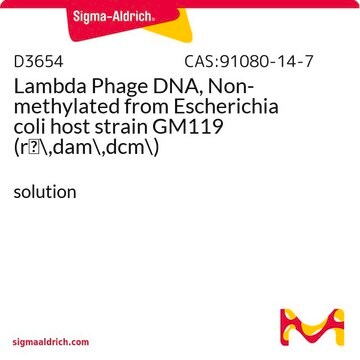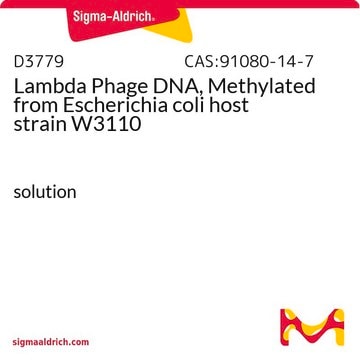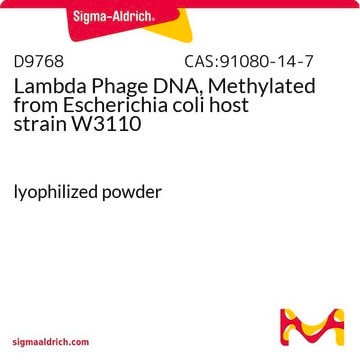Kluczowe dokumenty
10745782001
Roche
DNA, lambda
from bacteriophage lambda cl857 Sam 7
Synonim(y):
lambda dna
Wybierz wielkość
854,00 zł
Wybierz wielkość
About This Item
854,00 zł
Polecane produkty
Poziom jakości
Formularz
solution
masa cząsteczkowa
32,300 kDa
opakowanie
pkg of 1 mL
producent / nazwa handlowa
Roche
warunki przechowywania
avoid repeated freeze/thaw cycles
stężenie
250 μg/mL
zanieczyszczenia
RNA, none detected
nuclease, none detected
kolor
colorless
rozpuszczalność
water: miscible
Warunki transportu
dry ice
temp. przechowywania
−20°C (−15°C to −25°C)
Opis ogólny
Zastosowanie
Jakość
Sekwencja
Postać fizyczna
Przechowywanie i stabilność
Inne uwagi
Kod klasy składowania
12 - Non Combustible Liquids
Klasa zagrożenia wodnego (WGK)
nwg
Temperatura zapłonu (°F)
No data available
Temperatura zapłonu (°C)
No data available
Wybierz jedną z najnowszych wersji:
Masz już ten produkt?
Dokumenty związane z niedawno zakupionymi produktami zostały zamieszczone w Bibliotece dokumentów.
Klienci oglądali również te produkty
Nasz zespół naukowców ma doświadczenie we wszystkich obszarach badań, w tym w naukach przyrodniczych, materiałoznawstwie, syntezie chemicznej, chromatografii, analityce i wielu innych dziedzinach.
Skontaktuj się z zespołem ds. pomocy technicznej








